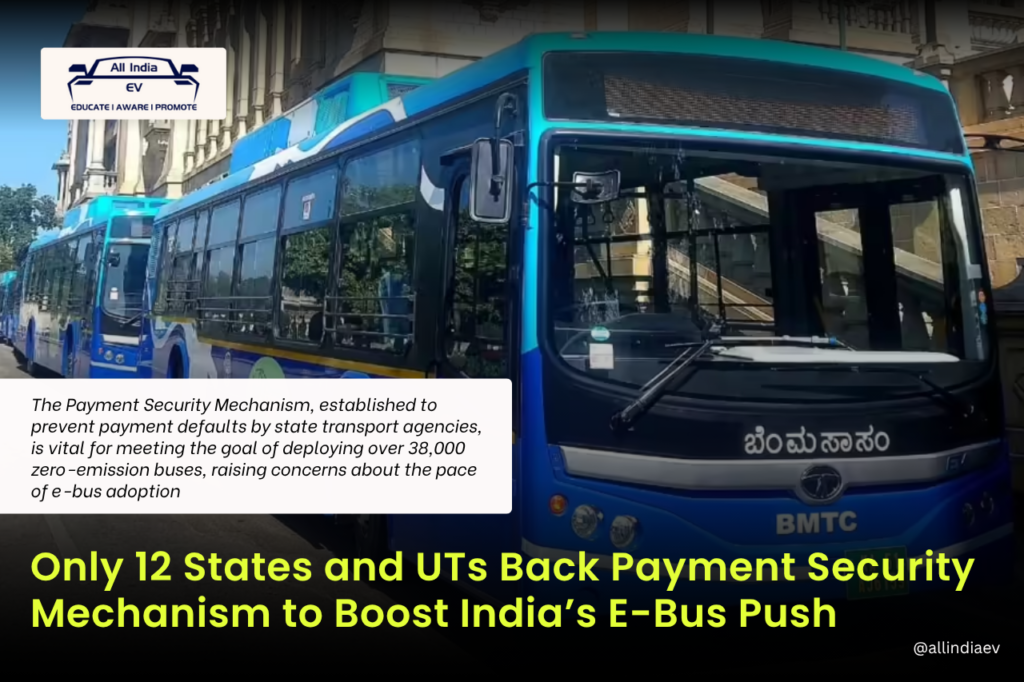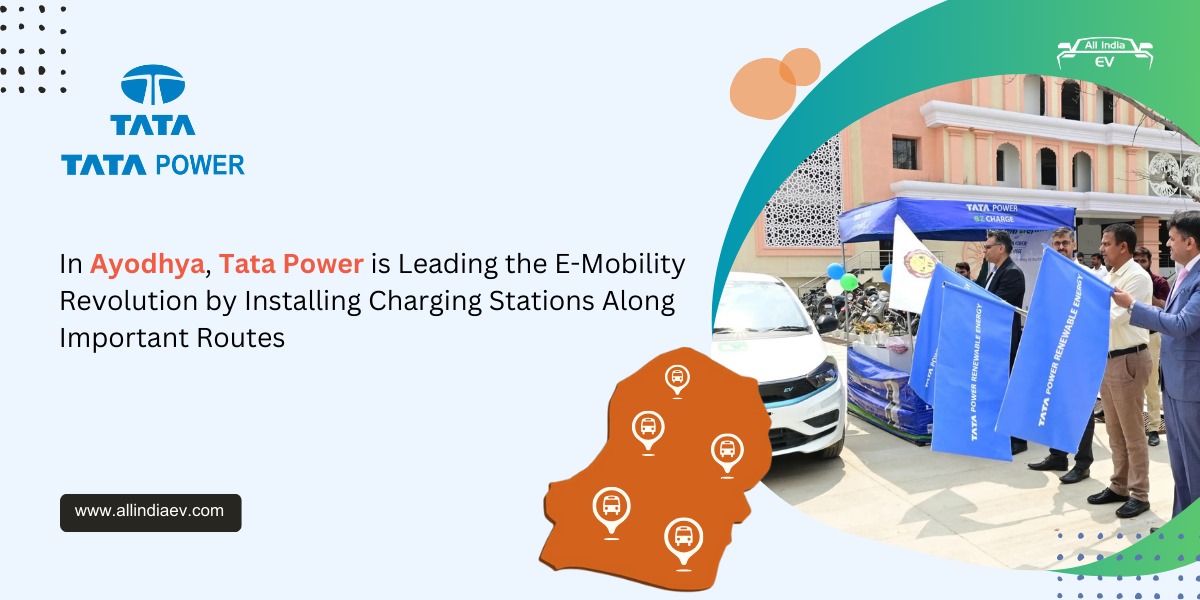
Despite Leading in E-Bus Purchases, Delhi Yet to Deposit PSM, Reveals PTI Report
- Limited Participation Despite Policy Push
- Payment Security: A Crucial Step for Operator Confidence
- Lack of Clarity from Non-Participating States
- E-Bus Push Tied to National Electrification Goals
- Growing E-Bus Market Amid Infrastructure Challenges
- States Lagging Behind Could Miss the Bus
- Conclusion: Need for Unified Action
India’s push toward electric mobility is facing a key challenge as only 12 states and Union Territories (UTs) have so far joined the payment security mechanism (PSM) under the PM E-bus Sewa scheme, designed to boost confidence among e-bus manufacturers and operators.
According to officials familiar with the matter, the participating states and UTs include Gujarat, Karnataka, Rajasthan, Punjab, Telangana, Andhra Pradesh, Madhya Pradesh, Meghalaya, Maharashtra, Uttarakhand, Odisha, and Jammu & Kashmir. Out of India’s 36 states and UTs, the limited participation is raising concerns about the pace of large-scale electric bus adoption across the country.
The PM E-bus Sewa Payment Security Mechanism (PSM) aims to provide assurance of timely payments to operators and manufacturers involved in deploying over 38,000 zero-emission electric buses nationwide.
Limited Participation Despite Policy Push
A senior government official confirmed that Maharashtra submitted its Direct Debit Mandate (DDM) in August 2025, followed by Odisha and Jammu & Kashmir in September, bringing the total number of participating states and UTs to 12.
“The DDM submission marks a state’s official participation in the payment security mechanism,” the official said. “It ensures that in case a state transport agency defaults on payments, funds can be directly accessed to compensate the operator or OEM.”
The Direct Debit Mandate (DDM) acts as a formal guarantee mechanism, enabling funds to be automatically transferred from a state’s account with the Reserve Bank of India (RBI) in case of delayed or missed payments to e-bus suppliers and operators.
Payment Security: A Crucial Step for Operator Confidence
The payment security framework was introduced almost a year ago after several state transport undertakings (STUs) failed to pay dues to electric bus operators under earlier contracts. Under this system, states deposit a guarantee fund with the RBI, ensuring that in case of payment defaults, OEMs (Original Equipment Manufacturers) and private operators are compensated from the PSM fund. The central government later recovers the amount from the respective Public Transport Agencies (PTAs) or State Transport Agencies (STAs).
However, major EV-adopting states like Delhi — which has one of the largest electric bus fleets in India — are yet to join the mechanism, raising concerns about their payment assurance practices.
E-bus contracts are typically executed under the Gross Cost Contract (GCC) model, where PTAs or STAs pay operators a per-kilometre fee for running buses. Delays or defaults in payments under this model can severely disrupt operations and discourage private participation.
Lack of Clarity from Non-Participating States
When contacted, none of the 12 states that have submitted their DDMs provided comments on the implementation timeline or fund disbursement structure. Similarly, email queries sent to non-participating states and UTs seeking reasons for their inaction went unanswered.
Requests for comments from the Union Ministry of Heavy Industries and the Reserve Bank of India (RBI) also remained unaddressed.
E-Bus Push Tied to National Electrification Goals
The PM E-bus Sewa PSM is a part of the broader national electrification strategy aimed at reducing vehicular emissions and cutting India’s dependence on imported oil.
According to Chief Economic Advisor V. Anantha Nageswaran, electrifying public transport systems such as city bus networks is key to achieving India’s clean mobility and energy security goals. The Economic Survey for FY25 highlighted that sustainable urban transport remains a top policy priority.
The PSM works in tandem with the ₹10,900-crore PM E-Drive Scheme, which targets the deployment of 14,028 e-buses across India by reducing upfront procurement costs. Out of this allocation, ₹4,391 crore is dedicated to providing financial support to bus operators and manufacturers.
The payment security mechanism itself has an outlay of ₹3,435 crore, managed by the Ministry of Heavy Industries, and is intended to stabilize cash flows and mitigate financial risks in large-scale e-bus operations.
Growing E-Bus Market Amid Infrastructure Challenges
Despite payment hurdles, India’s e-bus market is expanding steadily. During April–September 2025 (H1 FY26), e-bus sales rose 37% year-on-year, reflecting growing adoption across multiple states.
Experts say the next phase of expansion depends heavily on intercity electrification and the availability of charging infrastructure along highways. Under the PM E-Drive scheme, the government is working to install over 72,000 public charging stations, with a plan to subsidize most of the infrastructure costs.
“Faster adoption of e-buses will directly contribute to India’s decarbonisation targets,” said a senior transport policy expert. “But unless payment assurances are in place, private players will remain hesitant to invest at the required scale.”
States Lagging Behind Could Miss the Bus
The slow uptake of the payment security scheme highlights a structural gap between policy design and implementation at the state level. States that fail to deposit their DDMs may face delays in e-bus procurement tenders, affecting both public transport modernization and local emission reduction goals.
Meanwhile, a recent NITI Aayog–WRI study (August 2025) ranked Delhi, Maharashtra, and Chandigarh as the top-performing regions for EV policy implementation under the India Electric Mobility Index (IEMI) 2024. However, even among frontrunners, the delay in adopting financial security frameworks like the PSM could slow down the momentum.
Conclusion: Need for Unified Action
While the central government’s payment security mechanism is a well-intentioned step toward de-risking e-bus operations, its effectiveness hinges on broader state participation.
For India to meet its clean mobility targets, experts stress the need for faster financial coordination between the Centre, states, and OEMs. Without payment security in place, India’s ambitious e-bus plans may stall before reaching full scale, undermining the goal of putting 38,000 zero-emission buses on the road by the end of the decade.










